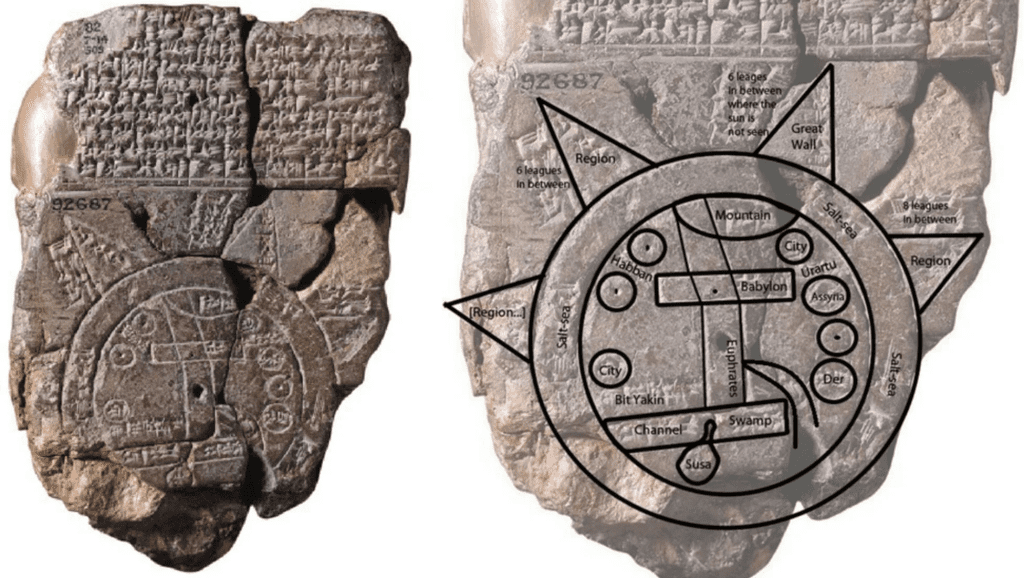Long before Google Earth or even paper maps, humans were already trying to make sense of the vast world around them. Nearly 2,600 years ago, in what is now modern-day Iraq, an unknown Babylonian scholar etched a remarkable vision of the universe onto a piece of clay. This artifact, known as the Imago Mundi, holds the title of the world’s oldest known map.
But this map was more than a record of geography. It was a reflection of how ancient Mesopotamians understood the cosmos blending myth, religion, and observation into a single image that placed Babylon at the very heart of existence.
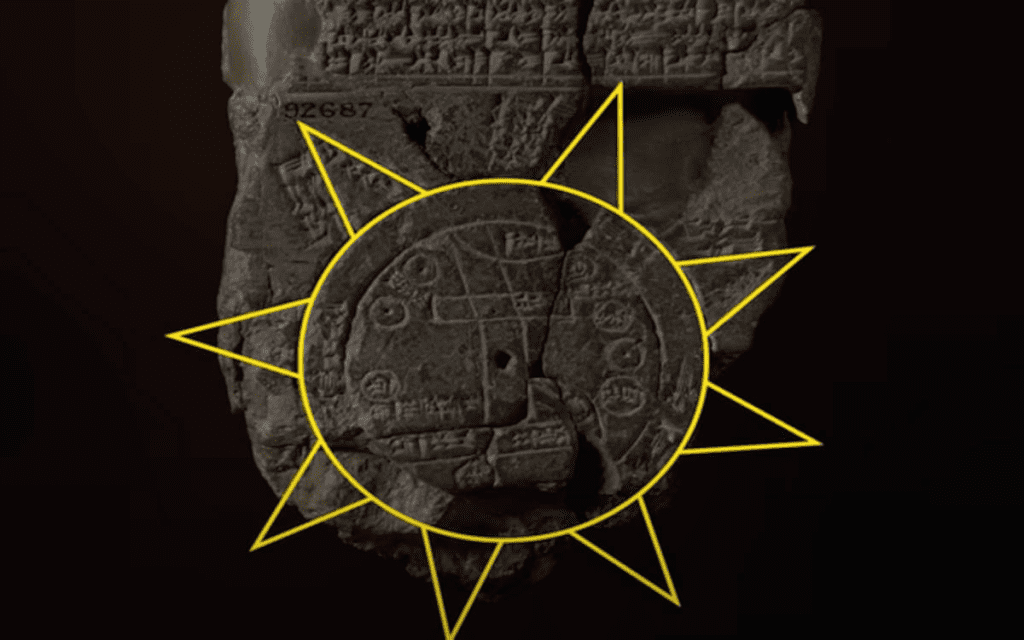
A Circular World with Babylon at the Center
The Imago Mundi, which translates from Latin as “Image of the World,” was discovered in Sippar, a city just north of Babylon. The small, circular clay tablet now sits in the British Museum, where it continues to intrigue historians, archaeologists, and anyone fascinated by early civilizations.
On the map, Babylon is boldly marked at the center. Surrounding it are other recognizable regions and cities such as Assyria and Elam. Further out, large bodies of water interpreted as rivers or perhaps even seas form a circular boundary, enclosing the known world.
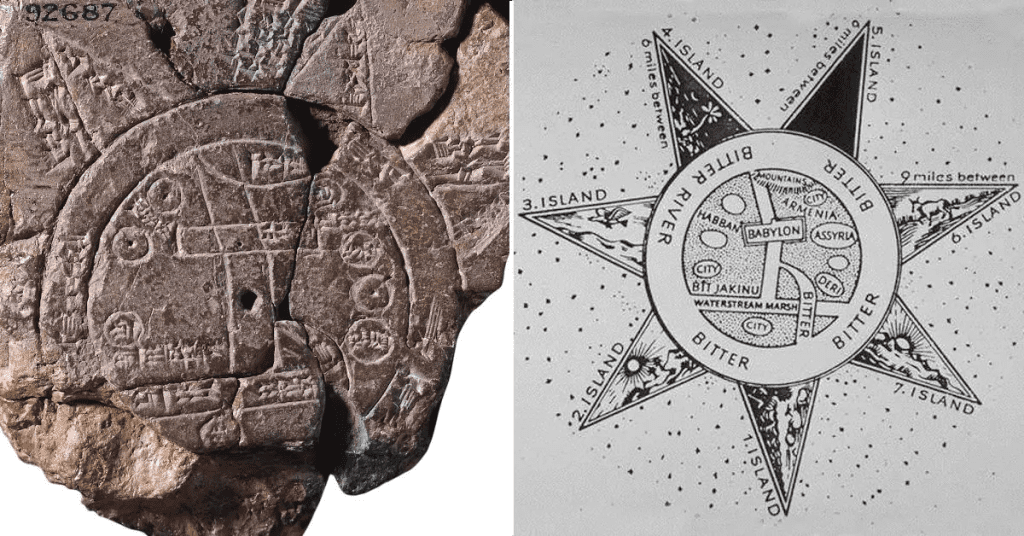
Beyond this watery edge lie mysterious triangles labeled as “regions beyond the ocean.” These areas were likely imagined or mythical lands, suggesting that even in ancient times, people believed in the existence of far-off places yet to be discovered.
What the Imago Mundi Tells Us About Ancient Beliefs
While the Imago Mundi includes geographic references, it also serves a deeper cultural and symbolic purpose. The structure of the map reveals how the Babylonians saw their place in the universe.
The central position of Babylon was no coincidence. At the time, the city was a major political and religious power. By placing it in the middle of the map, the creators were making a statement: Babylon was not just the center of their world it was the center of the world.
Video:
The Babylonian Map of the World with Irving Finkel | Curator’s Corner S9 Ep5
The circular shape of the map and the surrounding waters echo the Mesopotamian belief in a flat Earth surrounded by cosmic waters. This idea was reinforced in other Babylonian texts, which described a divine order of the heavens and Earth arranged in concentric layers.
The map’s inscriptions include references to mythological features and events, such as monstrous creatures or divine interventions, blending historical knowledge with religious storytelling.
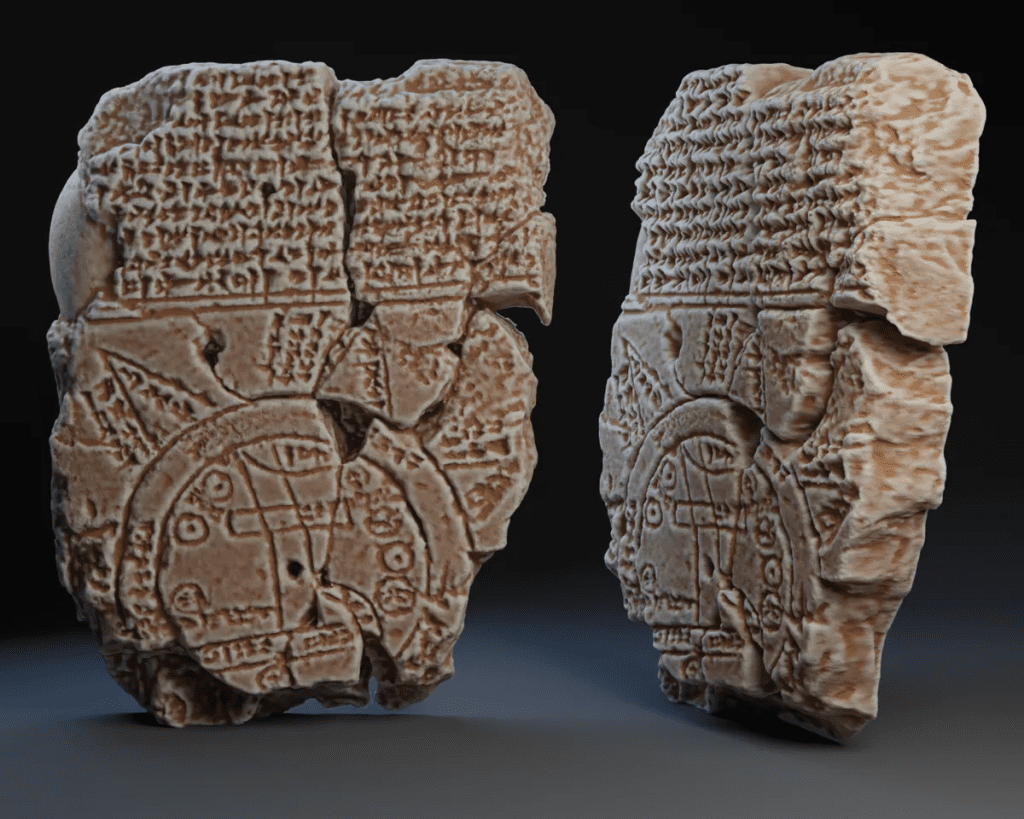
Crafting the Map: Clay, Symbols and Ancient Insight
Unlike modern maps, the Imago Mundi was not drawn with ink or printed on paper. It was pressed into wet clay using a stylus, then baked to preserve it. The Babylonian script used is cuneiform, a wedge-shaped writing system that was among the earliest forms of written language.
Video:
Mappa Mundi: The greatest map of the medieval world | BBC Global
Creating such a tablet required not only technical skill but also access to a shared cultural understanding. Each symbol, location, and boundary would have been instantly recognizable to a Mesopotamian reader, even if today’s scholars must rely on translations and educated guesses.
Why This Map Still Matters
In many ways, the Imago Mundi is more than just an artifact. It is a snapshot of ancient human imagination. While modern maps aim for accuracy, this tablet shows us something equally important how people once made sense of a vast, mysterious world using the tools, stories, and beliefs they had.
It reminds us that maps are not only about direction. They are about perspective. They reflect what matters to a culture and how that culture situates itself in the grander scheme of things.
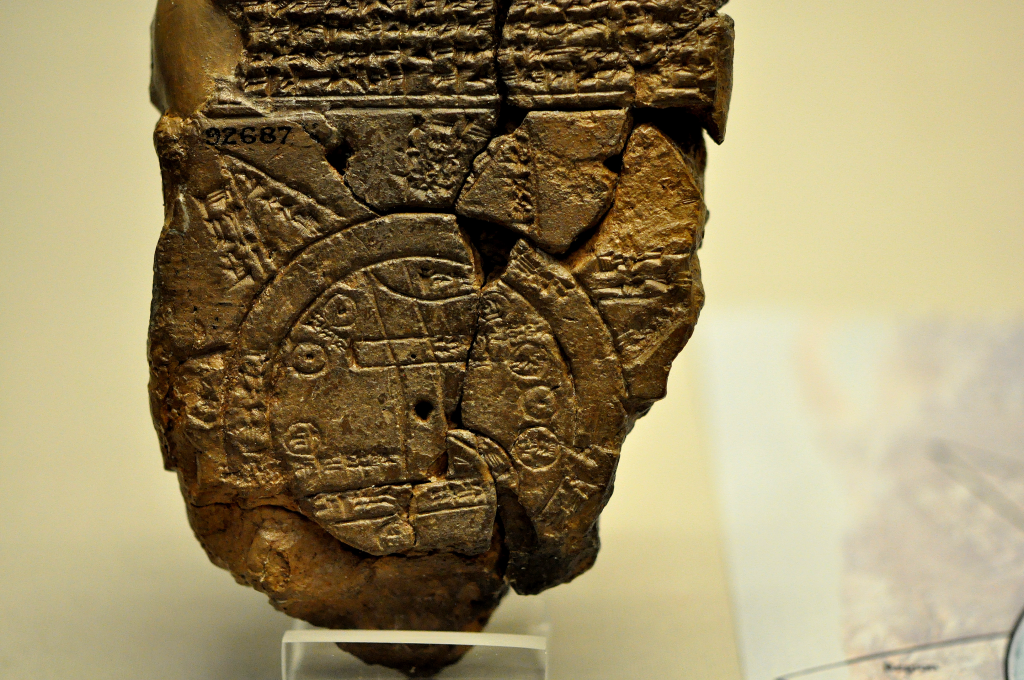
A Legacy That Still Shapes Us
Though the Imago Mundi was created millennia ago, its impact lives on. It laid the foundation for cartographic thought and continues to inspire debates about how humans record space and knowledge. It also demonstrates the powerful human urge to explore, explain, and orient ourselves in the universe.
From ancient clay to digital satellites, our methods may have evolved, but our curiosity remains the same. The Imago Mundi stands as a powerful symbol of that enduring quest to map not just the land, but our place within it.
